The Exorcist 3 (1990)
Directed by: William Peter Blatty
Written by: William Peter Blatty
Starring: Brad Dourif, Ed Flanders, George C. Scott, Jason Miller
USA
AVAILABLE ON REGION ‘A’ BLU-RAY
RUNNING TIME: 105 min/ theatrical version 110 mins
REVIEWED BY: Dr Lenera, Official HCF Critic
MAJOR SPOILERS!
A young boy is found nailed to a cross and soon afterwards a priest is found decapitated inside in a church. Investigating the crimes is Lieutenant William F. Kinderman, whose friend Father Dyer is found murdered himself in a hospital, with the words IT’S A WONDERFUL LIFE, the title of their mutually favourite film, written on a wall in Dyer’s blood. The fingerprints at the crime scenes do not match, indicating that a different person was responsible for each, but Kinderman sees a link with a serial killer executed 15 years ago, James “The Gemini” Venamun, who cut off the right index finger and carved the Zodiac sign of Gemini into the palm of the left hand of each of his victims, features which have been replicated with these three new killings….
The term ‘director’s cut’ has become overused and perhaps is even not totally accurate as footage now often just seems to be deliberately withheld from the cinema cut of a film just so the studio can make more money on an uncut Blu-ray or DVD. Ridley Scott can’t seem to make up his mind which of the two versions of Alien is his preferred one. Despite this, I’m generally a believer that the director’s cut of a film is the superior option, and not just because it hasn’t been mangled by studios or distributors; it’s also because I do genuinely believe that they are better versions. There’s certainly a case for the James Cameron theatrical versions being superior because of their tightness, but I find it almost impossible to fathom [and I know that this is going against the grain with these two particular examples] that one can say that – to name two of my favourites – Dances With Wolves [the extra hour fills in story gaps , is less sentimental about the Sioux and makes the ending make more sense because we’re never convinced that John Dunbar can really be a part of the tribe] and Cinema Paradiso [the extra hour fills in story gaps, is less sentimental, and makes the ending more powerful and tear-jerking] are better in the dumbed down theatrical versions. In terms of horror movies, we’ve recently seen the director’s cut of Nightbreed, which – truth be told – wasn’t as substantially different from the theatrical cut as I and probably many others expected but was still great to have – and now we have the director’s cut of another Morgan Creek production, William Peter Blatty’s The Exorcist 3. I reckon that it’ll come out on Blu-ray in the UK at some point, but I couldn’t wait to see it so I got my hands on the Region ‘A’ Shout Factory release.
Blatty actually wrote the story which eventually became The Exorcist 3 soon after the success of The Exorcist, but didn’t try to turn it into a film until Exorcist 2: The Heretic was released to a highly negative reception. The director of the first film William Friedkin was intended to direct what was called Legion until quarrels over the script caused him to leave. The project then went into development hell and Blatty turned the story into a novel which was published in 1983 and was a bestseller. He then decided to turn the book into a screenplay. Film companies Morgan Creek and Carolco both wanted to make the film; Blatty decided upon Morgan Creek after Carolco suggested the idea of a grown-up Regan MacNeil giving birth to possessed twins. John Carpenter was asked to direct but backed out when it was obvious that Blatty wanted to direct it himself. The central role of Lt. William Kinderman, a major character in the novel of The Exorcist but a minor one in the film, had to be recast, as Lee J. Cobb, who played the part in The Exorcist, had died in 1976. He was replaced by George C. Scott. The film was shot in Georgetown and studios in Wilmington, North Carolina. All seemed well until Morgan Creek demanded that there be an exorcism at the end of the movie, that we actually see Jason Miller’s Damien Karras [returning from The Exorcist], and that the title be The Exorcist 3. Despite protestations from Blatty and others, this was carried out, causing much new footage to be shot and much re-editing. The film was a commercial disappointment and received a mixed critical response, though its reputation has much improved since 1990.
Totally ignoring the second film which went down bizarre routes which angered many [I have a distinct fondness for it myself though acknowledge many of its weaknesses], The Exorcist 3 follows on from the first film even though Regan [ Linda Blair was busy spoofing her iconic role in Repossessed] is no longer to be seen [though she’s mentioned]. Right from its opening of the point of view of someone wandering through the streets of Georgetown, a voice informing us “I have dreams… of a rose… and of falling down a long flight of stairs”, a warning of evil about to arrive later that night at a church, demonic growls being heard, and leaves and other street trash suddenly flying into the church as a crucifix comes to life, The Exorcist 3 has a brilliant atmosphere of dread and foreboding throughout, with lots of uncanny details which are sometimes only noticed on subsequent viewings, like the nurse waving her hands in front of her face as a kind of precursor to that stunning shock moment in that hospital corridor. The gruesome stuff is mostly talked about rather than seen, the whole movie, which is as much a detective story as a horror, relying a great deal on chat but usually good chat, the most chilling bit perhaps being the Gemini Killer describing in horrid detail how he kills his victims, Brad Dourif in this scene one of the scariest serial killers in movie. Intelligent and quite subtle, though not without some sly humour [the catatonic old lady], The Exorcist 3 becomes a more conventional chiller towards the end and badly botches the set-piece in Kinderman’s house before the exorcism stuff appears, but George C. Scott, who is incredible throughout, helps to just about make most of it work.
Now of course anybody reading this probably knows all this about The Exorcist 3, so, unlike with my review of Nightbreed which is a far less seen film and, because it was a favourite film of mine when it first came out [I was quite late to The Exorcist 3], I’d been wanting to write about it for years, I’m not going to go on any more about the theatrical cut of the film and go straight on to my thoughts about the director’s cut. Now the first thing I should say is that the new footage looks pretty rough and will be easily distinguishable even if you haven’t seen the film in any form before. Apparently the only surviving footage of the original scenes was on video, and some scenes are still missing. That widely seen shot of the priest sitting on the bench holding his own severed head on his lap is still not in the film. About three quarters of the director’s cut is taken from the beautifully restored print of the theatrical cut, which may seem a little jarring when far worse-looking footage in fullscreen is suddenly inserted, but was better I think than having the whole movie look poor. Scream Factory still deserve a great deal of credit for putting this version together and they obviously did the best they could with what they had, but it doesn’t really flow.
As for the material itself…well, in the first half of the film, the extra bits are limited to added little bits in several dialogue scenes, notably in two between Kinderman and Dyer which is great because the two characters are great together and Scott and Ed Flanders have such chemistry it’s a shame that Dyer dies so soon. The opening has some footage rearranged and some even in black and white, while the establishing moments of Father Morning are gone because the character is no longer in the film and won’t show up for that exorcism at the end. It’s around half way when things get interesting as Kinderman as visits Patient X in his cell, which is now considerably browner and more grimy looking. It soon became obvious to me that, as well as inserting footage of Jason Miller, they also reshot all of Brad Dourif’s footage. Much of his dialogue is the same or almost the same but the performance is quite different in the director’s cut; calmer and more subtle. I have to say, I preferred him in the theatrical cut, though of course any extra Dourif is a must see. Meanwhile Scott’s performance is more or less the same since his role in the scenes is more reactionary, but there is one moment with Kinderman that plays out a little differently where, instead of demanding information, he sort of tries to slyly coax it out of X by agreeing that he is the Gemini Killer. I’m not sure that the scenes entirely work though what with Kinderman supposedly recognising X as Damien Karras but Karras not looking at all like the Karras we are familiar with. I think – and I can’t believe some of the stuff I’m typing here – they were right to add Miller.
Then we come to the ending. The exorcism sequence with all its special effects is replaced by a very short and simple scene of Kinderman going into the cell and blowing X away. It fits in better with the rest of the film, but it’s not much of a climax, so I’m not sure either ending is totally satisfactory. Blatty’s novel actually ends with the Gemini Killer summoning Kinderman to his cell for a final speech and then willingly dropping dead after his cruel and hated father, a Christian evangelist, dies a natural death from heart attack. As his motive for killing was always to shame his father, the Gemini’s reason for remaining on earth no longer exists and he kills Karras in order to leave his host body. In Blatty’s original screenplay adaptation, the ending is similar to the novel, except that the Gemini’s death is not self-induced but forced supernaturally and suddenly by the death of his father. In both novel and early screenplay, the Gemini’s motives for his murders are also given further context via a long series of flashbacks which portray his and his brother’s childhood and their relationship with their alcoholic, abusive father. If only this material had been incorporated into the film, and one of those two similar endings used, then the result would have been far more pleasing.
It’s really good that they found this footage and we now have this alternate cut to watch, and I would recommend any fan of the film to check this release out for themselves, especially with all the new interviews on the Blu-ray, but for once I’m of the opinion that, despite what [with all due respect] Dourif and others say, the theatrical cut is the superior version and that, for once, the studio were right to meddle. After all, pretty much all the great stuff in the film was retained for their version. Of course if all of the footage turns up one day and Blatty then assembles his own cut from scratch then the result may be different.
Director’s cut Rating: 









Theatrical version Rating: 










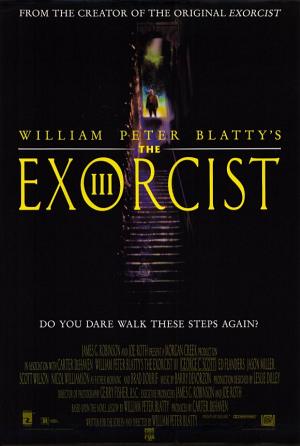
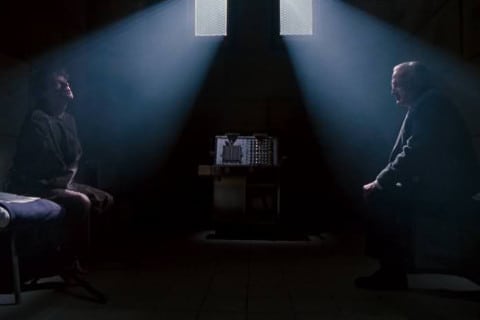
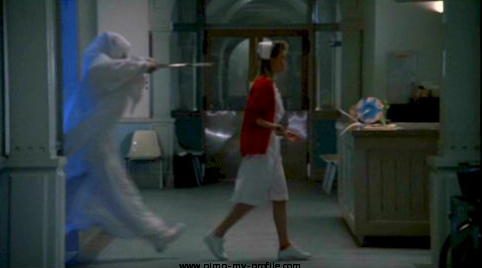

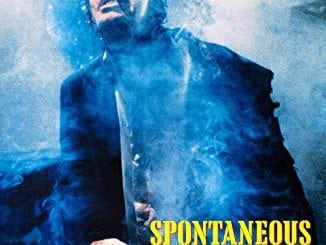
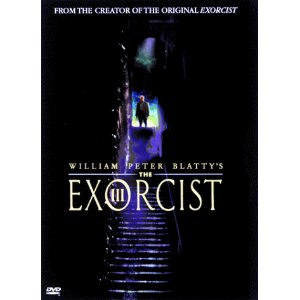
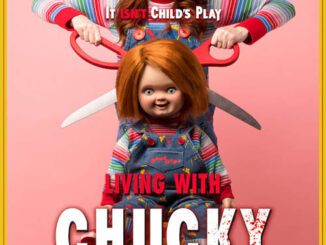
Be the first to comment